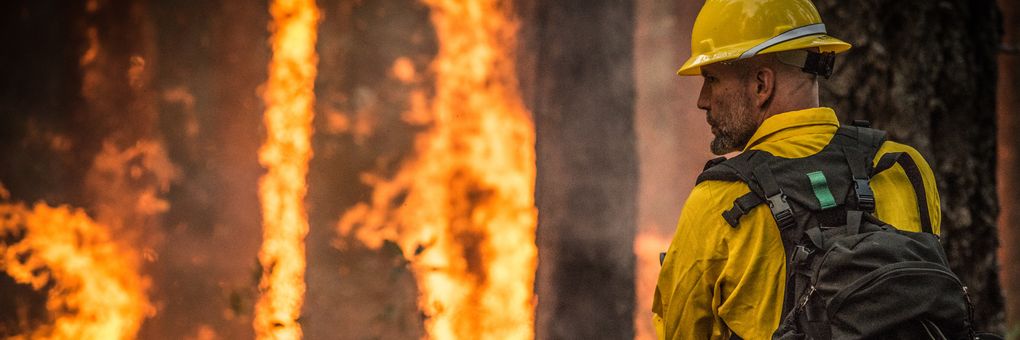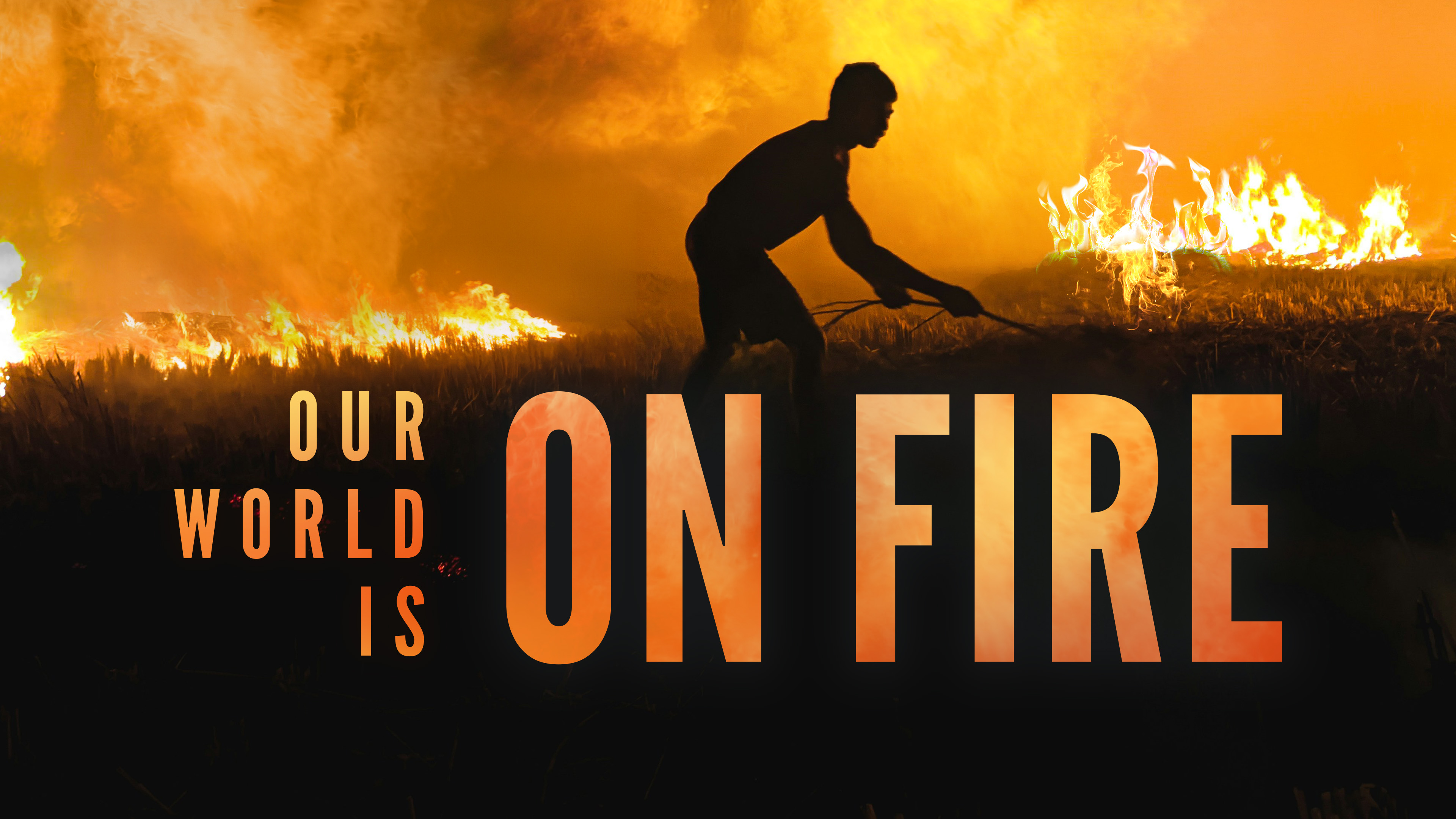Climate change is the main driver of the increase in fire weather around the globe.
◊
It’s often been said – mostly by people who don’t live out here – that Southern California has only one long, monotonous season: Sun. But we who reside under the “warm California Sun” know better. In fact, there are seasons in Southern California. There are precisely two: Rain and Fire. (Yes, despite what outsiders may have been told, it rains in California.)
I’ve been a Southern Californian for 35 years, and I remember that we used to be able to count on a rainy season that began about October 1. That’s the date meteorologists have used to start what’s known as our “water year.” Our other season, Fire, was once predictable as well. It traditionally started in April and peaked in September, when three factors were at their height: (1) low humidity, (2) dry tinder, and (3) heat.
But that was before the effects of climate change began to take root. Over the past generation, drought and higher average temperatures have spiraled into a pattern that scientists refer to as the “climate feedback loop.” That means longer periods of no rain, which lead to drier forests and, therefore, make wildfires more intense, more damaging, and longer lasting. And, to make matters literally even worse, these conditions actually exacerbate climate change as well.
Massive wildfires, such as those seen in the western United States, Australia, Greece, and elsewhere over the past decade, release carbon into the environment. More carbon gases (in the form of carbon monoxide and carbon dioxide) released into the environment intensify the three causes of the wildfires mentioned above – a dry atmosphere, higher temperatures, and critically flammable timber. That’s the loop, and it’s a crisis.
Learn more about the relationship between climate change and wildfires in this sizzling MagellanTV documentary.
The Ever-lengthening ‘Fire Season’
Wildfires are part of the natural cycle of growth and destruction and have been with us forever. They stimulate the release of seeds by vegetation, clear out forest floors of excess growth, especially by invasive species, and bring about the rise of new habitats for native species of woodland animals and other forest creatures.
Human carelessness and criminal intent are the most significant causes of wildfires. Human behavior has caused more loss to wildlands than even fires caused by lightning, which is the second most common cause of wildfire.
However, the old rules of forest fire behavior are no longer reliable. Studies and observations suggest that wildfire seasons have been getting longer and more intense in recent years. This trend is largely attributed to climate change, which has led to warmer temperatures, altered precipitation patterns, and longer periods of drought. These conditions not only contribute to the increasing number of wildfires but also make them harder to control. The extension of the wildfire season increases the duration and frequency of fire-prone conditions, thereby expanding the window during which fires are likely to occur.
While fire season in the western U.S. has lengthened, starting earlier and ending later, the same is true in other areas of the world, but with different start and end times: In Australia, the wildfire season, known as the bushfire season, is most intense during the Southern Hemisphere’s summer, from December to February. In the Mediterranean, including regions like southern Europe, the fire season occurs in the hot and dry summer months, particularly from June to September. And in South America, particularly in the Amazon, the dry season from July to October often sees the most fires.
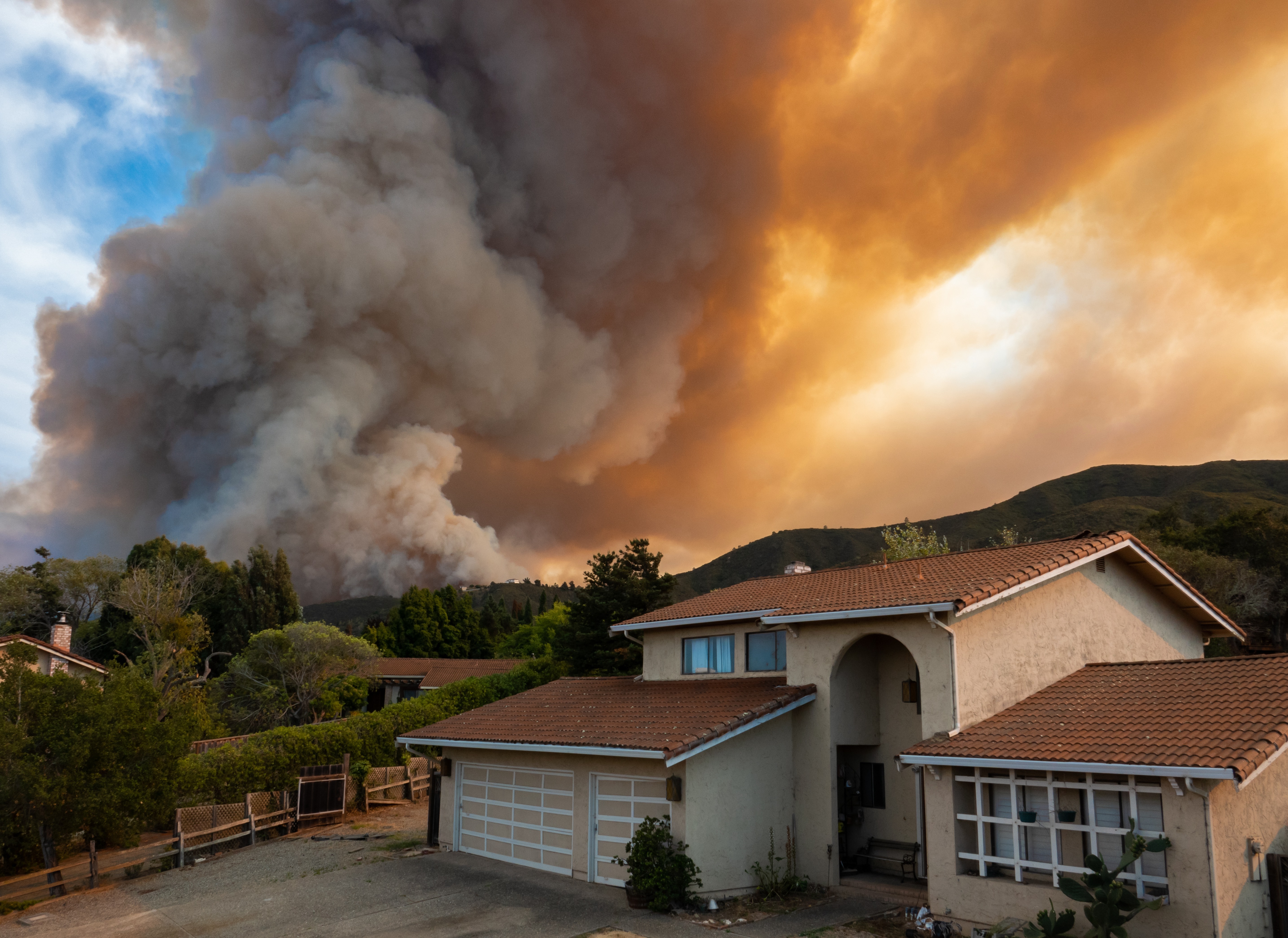 In the wildland-urban interface, such as this site in Salinas, California, in 2020, wildfires are increasingly common. (Source: David A. Litman, via Adobe Stock Images)
In the wildland-urban interface, such as this site in Salinas, California, in 2020, wildfires are increasingly common. (Source: David A. Litman, via Adobe Stock Images)
Some of the World’s Most Massive Wildfires Happened This Decade
Many enormous wildfires have left significant and lasting marks around the globe. Here are some of the largest ones from the recent fire seasons of the 2020s.
California, Washington, and Oregon Wildfires
A collection of fires across the West Coast of the United States in 2020 burned more than four million acres in California alone, spreading significantly across Oregon and Washington. The scale and intensity of these fires were attributed to global warming, which dries out vegetation and fuels larger fires.
The largest wildfire in California’s recorded history was that year’s August Complex Fire. This massive wildfire burned through more than one million acres across multiple counties in northern California. It started as a series of lightning-induced blazes, which later merged into a single enormous conflagration.
Canadian Wildfires
The most destructive wildfire season for Canada was even more recent, in 2023. Fueled by record-high temperatures and widespread drought, more than 6,000 fires torched approximately 58,000 square miles of land between May and September. This resulted in a smoky haze covering much of the northeastern United States, notably blanketing New York City in early June and causing hazardous, unhealthy atmospheric conditions.
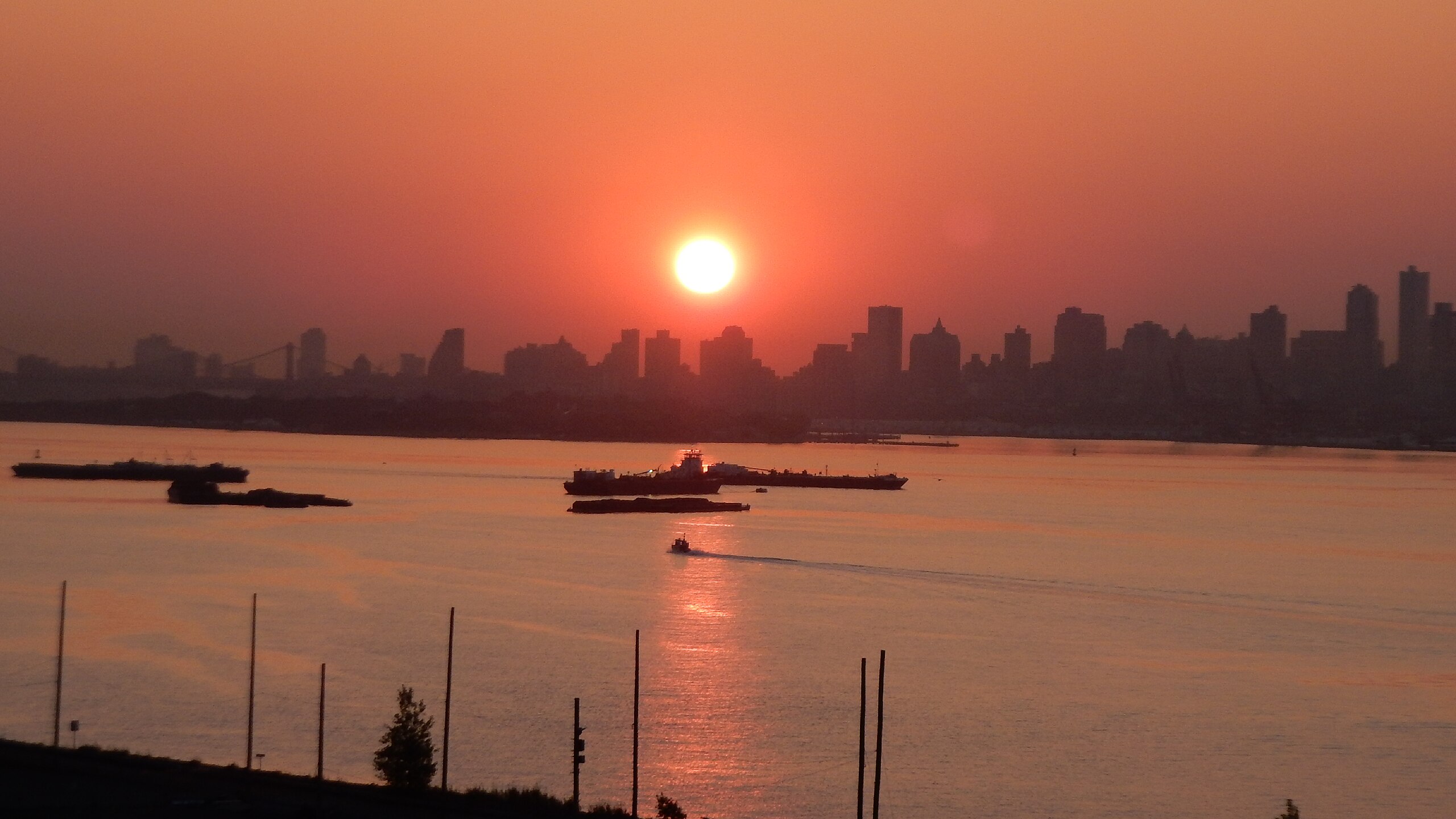 New York City was coated with an orange haze in early June 2023 due to the intense Canadian fire season. (Source: slgckgc, via Wikimedia Commons)
New York City was coated with an orange haze in early June 2023 due to the intense Canadian fire season. (Source: slgckgc, via Wikimedia Commons)
Australian Bushfires
Known as the Black Summer bushfires of 2020, these fires devastated approximately 46 million acres across various regions in Australia. The fires were the worst the country had seen in decades, causing billions of dollars in damage, thousands of deaths, and widespread destruction.
Amazon Rainforest, Brazil
Significant portions of the Brazilian Amazon experienced wildfires that burned extensively due to drought conditions and controversial deforestation practices promulgated by Brazil’s then-president, Jair Bolsonaro, in 2020. The fires had profound impacts on the biodiversity and ecological health of the region.
Siberian and Arctic Fires
The Arctic, particularly Siberia, saw record fire seasons in 2020 with the emergence of "zombie fires" capable of smoldering and burning through and under the ice, significantly impacting the permafrost and releasing large amounts of greenhouse gases.
Greece
The Evros fire, which burned over 230,000 acres in northeastern Greece in 2023, was the largest wildfire in recent European history. The fire lasted more than two weeks and destroyed hundreds of structures. The suspected cause of this fire was arson.
Indonesia Wildfires
This year, 2024, has beaten all records for wildfires in Indonesia. More than 4,000 square miles across Indonesia were affected by wildfires during the dry season, leading to significant air quality issues and health concerns due to the widespread smoke. Agricultural conversion, i.e., using slash-and-burn methods to clear forests for growing crops, is a major cause of these expansive, destructive fires.
These events underscore the increasing frequency and intensity of wildfires globally, often exacerbated by climate change and human activities. The effects of these fires extend beyond the immediate damages, impacting global ecosystems, climate patterns, and human communities.
What Can Be Done to Mitigate Wildfire Intensity and Duration?
Extended periods of heightened fire risk pose significant management challenges and increase the strain on firefighting resources, necessitating greater emphasis on fire prevention measures, community preparedness, and sustainable land management practices to mitigate the impact of wildfires.
Forest fires worldwide now result in nearly 24,000 more square miles of tree cover loss per year than they did in 2001. For comparison, that’s approximately the size of the country of Lithuania.
One significant area of focus is the extensive wildland-urban interface (WUI) that marks the regions where human activity meets natural wildland, including forests. In California, and in many growing urban areas, this marks where home construction directly abuts forests and woodland. In some other parts of the world, WUI consists of land being converted to crop-bearing acreage. These areas comprise the locus for many wildfires of human origin, and it’s in these exurban spaces where fire prevention interventions could have the greatest impact.
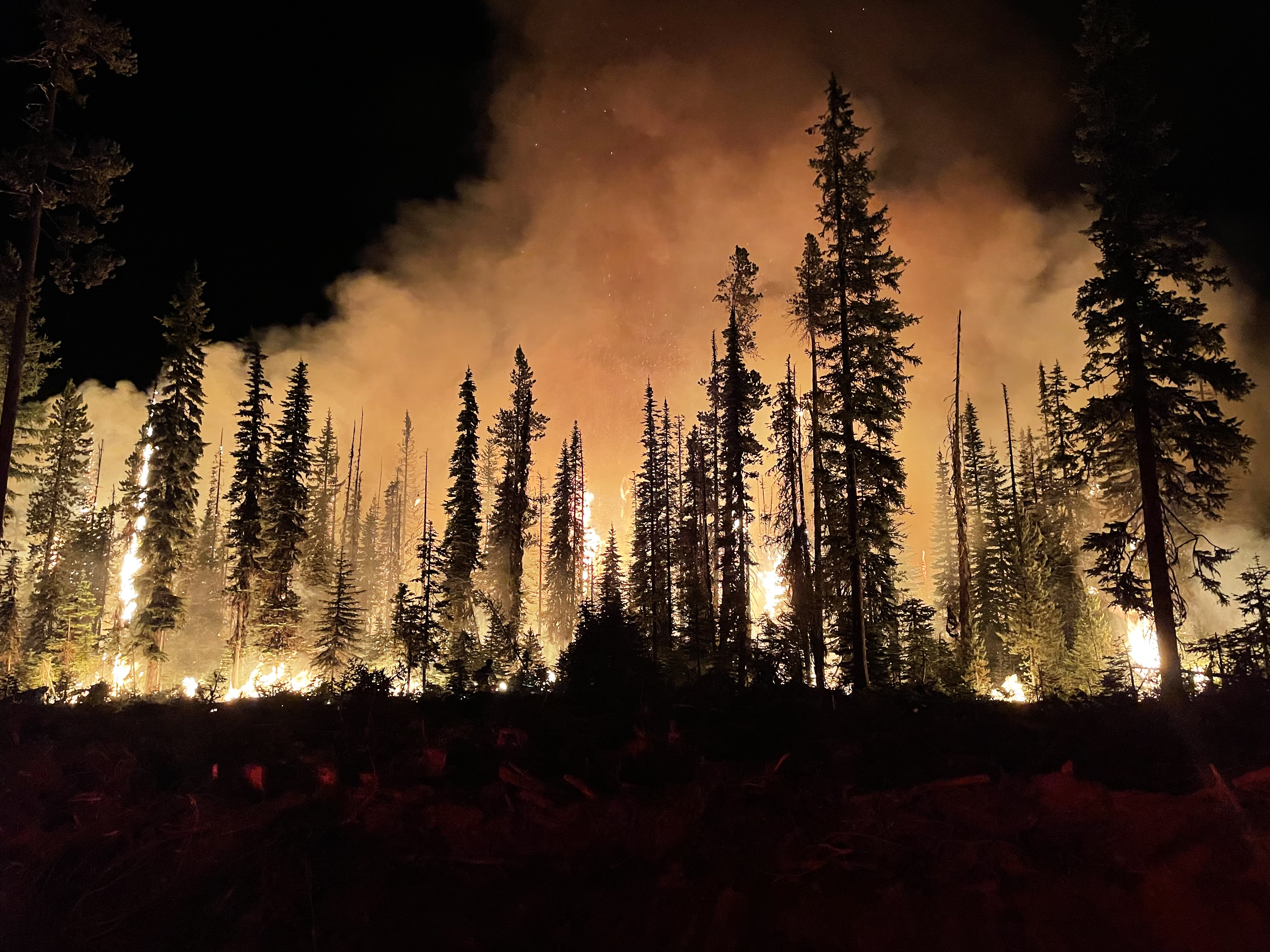 Wildfire at Lick Creek, Umatilla National Forest, Oregon, July 16, 2021 (Source: U.S. Forest Service, via Wikimedia Commons)
Wildfire at Lick Creek, Umatilla National Forest, Oregon, July 16, 2021 (Source: U.S. Forest Service, via Wikimedia Commons)
But worldwide, fire prevention tactics are minuscule in scope compared to the breadth of human activity in WUI areas. Unfortunately, there is neither consensus nor international agreement on a strategy to limit the forest destruction that creates human interfaces with nature and results in human-caused wildfires. This is the tragedy of the climate feedback loop, whereby fire unleashes carbon and particulate matter into the air that we breathe and degrades our planet’s ecosystem, which in turn creates conditions that result in more severe and intense wildfires.
Fire Prevention Includes Prescribed Burns
One method that has been successful in mitigating the worst effects of wildfires is setting planned fires in old-growth forests. Known as “prescribed burns,” these have many salutary effects on forests and the environment. They promote species diversity and reduce accumulations of flammable vegetation. More importantly, they have been shown to be effective at reducing the risk of larger, out-of-control conflagrations in the same locations.
The U.S. Forest Service notes that it, along with other groups and cultures around the globe, uses prescribed burns when the relative humidity, air temperature, vegetation moisture levels, and wind conditions allow for a low- or moderate-intensity fire to be safely introduced into the landscape. With a prescribed fire, most of the big trees will remain alive, forest canopies will be unburnt, and the soil will be able to absorb water.
Other advantages include:
- Protecting homes and infrastructure from high-intensity wildfires by reducing the “fuel load” of forests in the WUI
- Lessening the spread of insects and disease
- Removing invasive species, improving the natural habitat for fire-tolerant flora and fauna
- Providing forage for wildlife
- Recycling nutrients back into the soil
- Promoting the growth of trees, wildflowers, and other plants
- Minimizing human exposure to long periods of high-particulate smoke, characteristic of large wildfires
We may never return to the old definition of “fire season.” Because of rapid climatic change, including drought and increasing heat, fires can happen in virtually any month when conditions are right. With increased monitoring and scientific advances in ecology, biology, and botany, we may be able to reach a point of stasis. That, however, seems a long way off now that fire season is year-round.
Ω
Kevin Martin is Senior Writer and Associate Editor for MagellanTV. A journalist and communications specialist for many years, he writes on various topics, including Art and Culture, Current History, and Space and Astronomy. He is the co-editor of My Body Is Paper: Stories and Poems by Gil Cuadros (City Lights) and resides in Glendale, California.
Title Image: A firefighter at the Big Windy Complex Wildlands Fire in Oregon conducts a prescribed burn "burnout" operation, August 9, 2013. (Source: U.S. Department of Agriculture. Photo by Lance Cheung, via Flickr)

